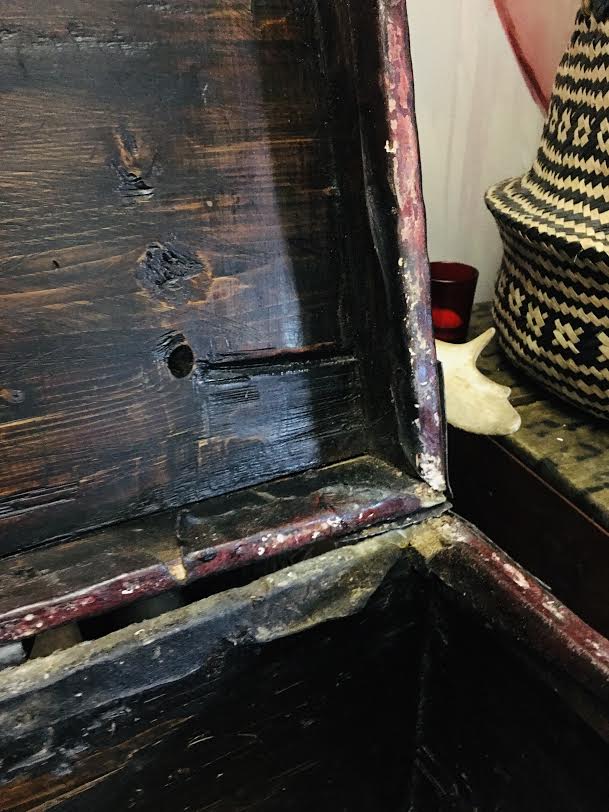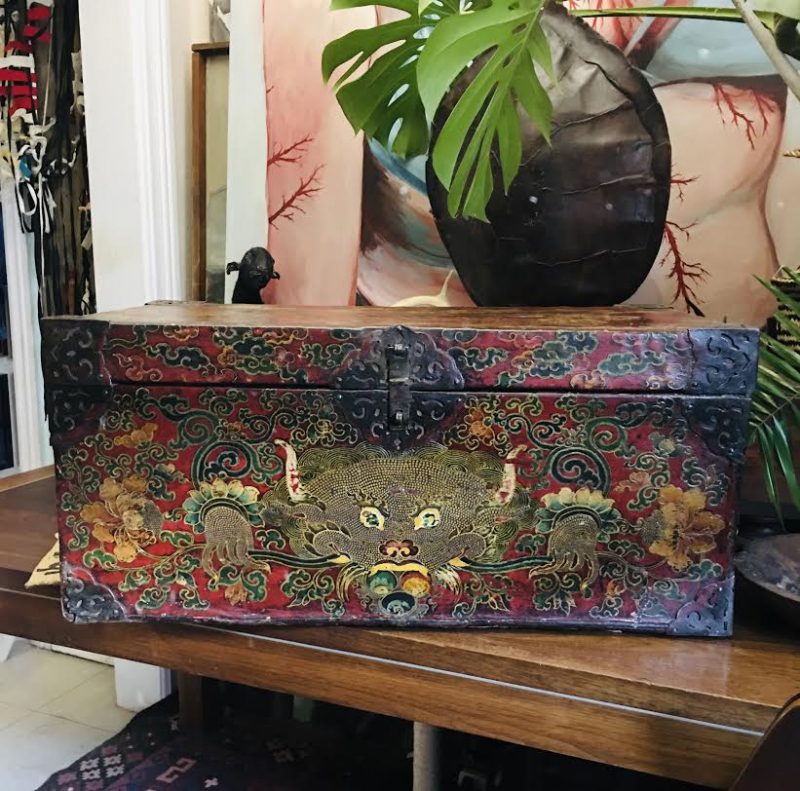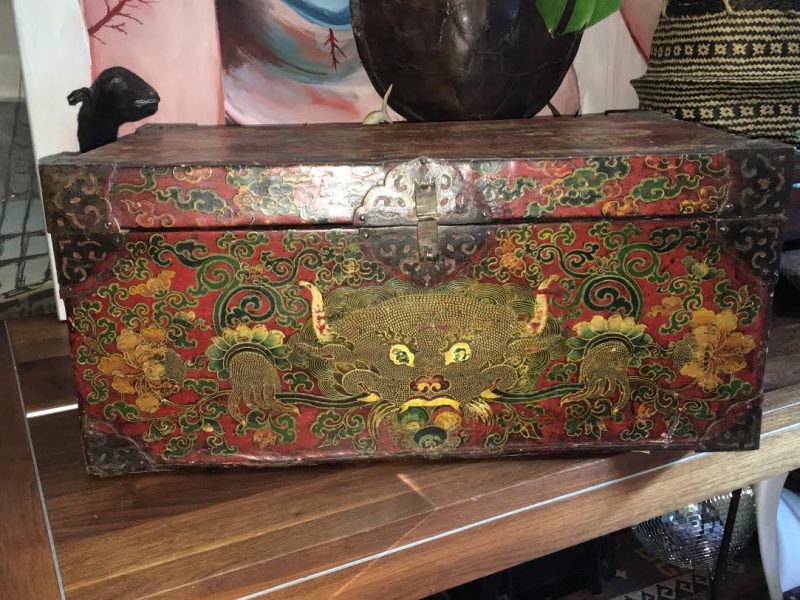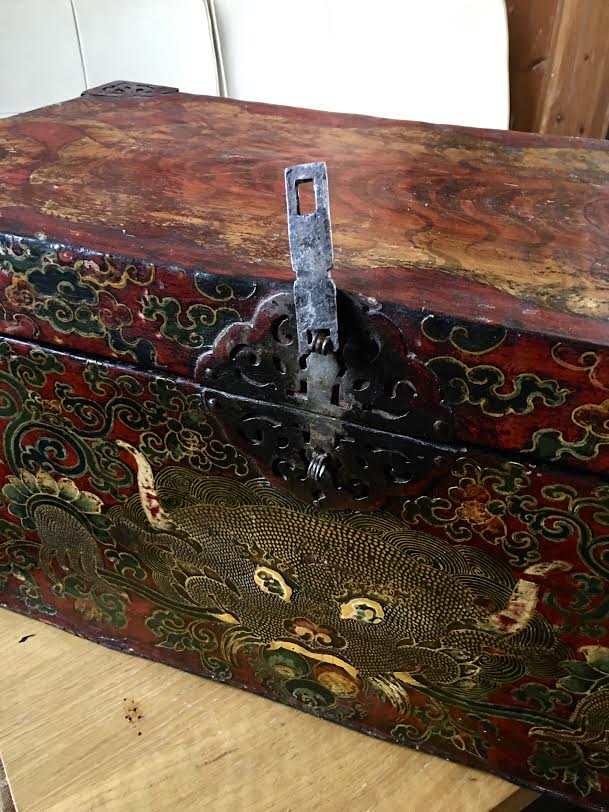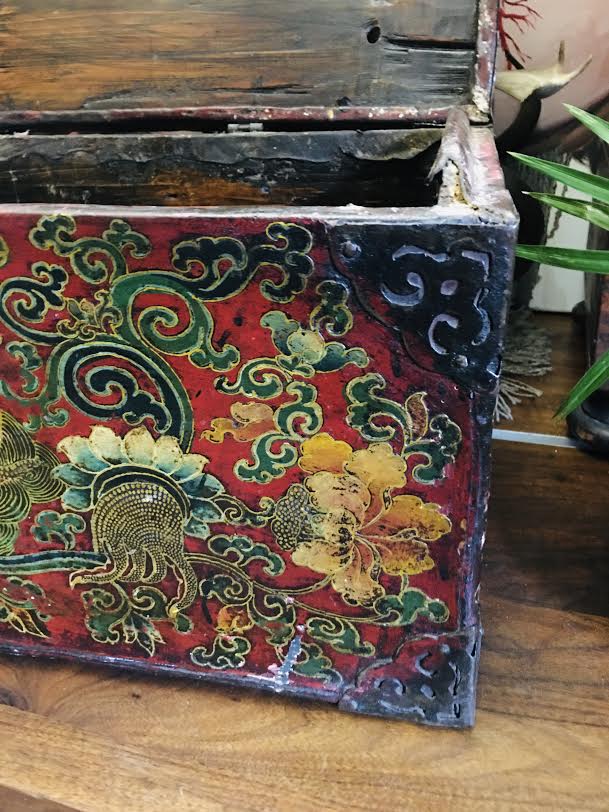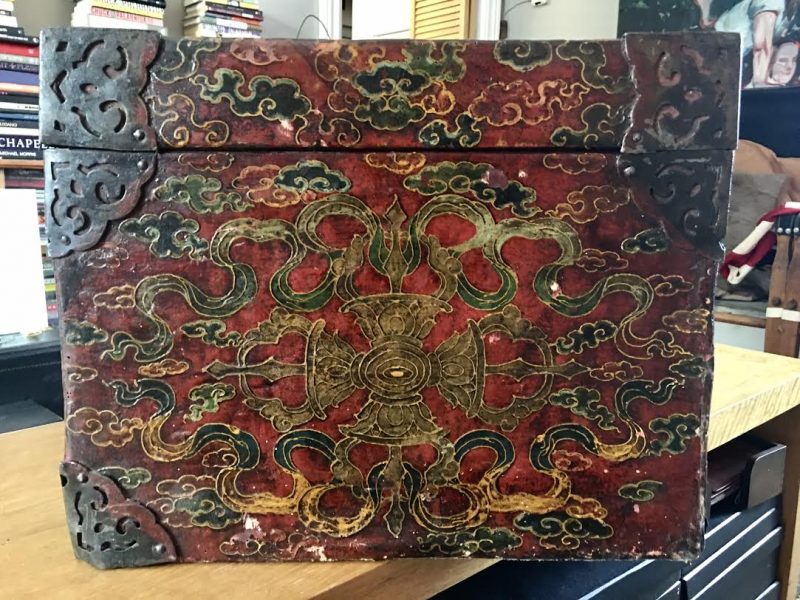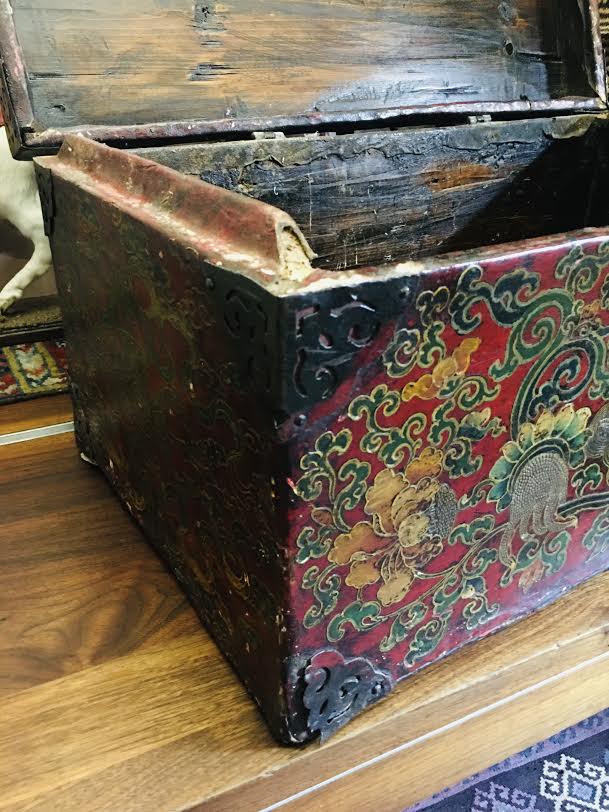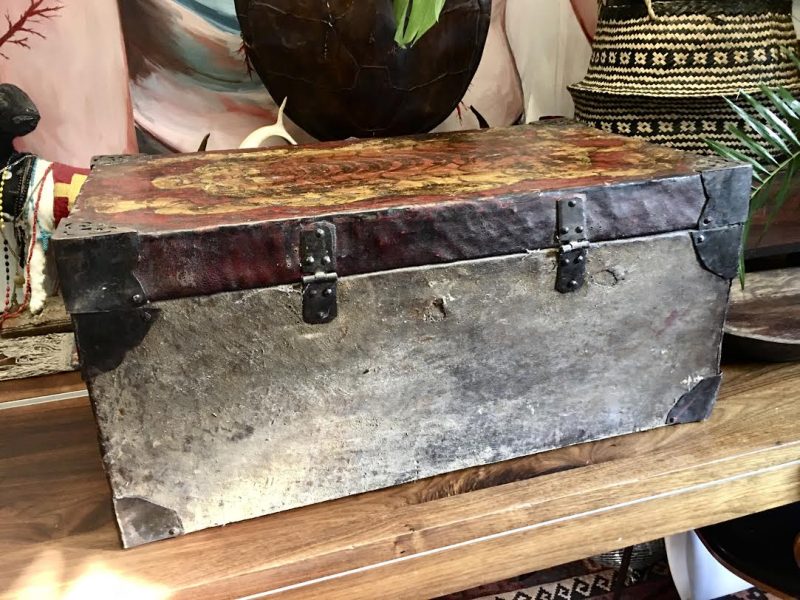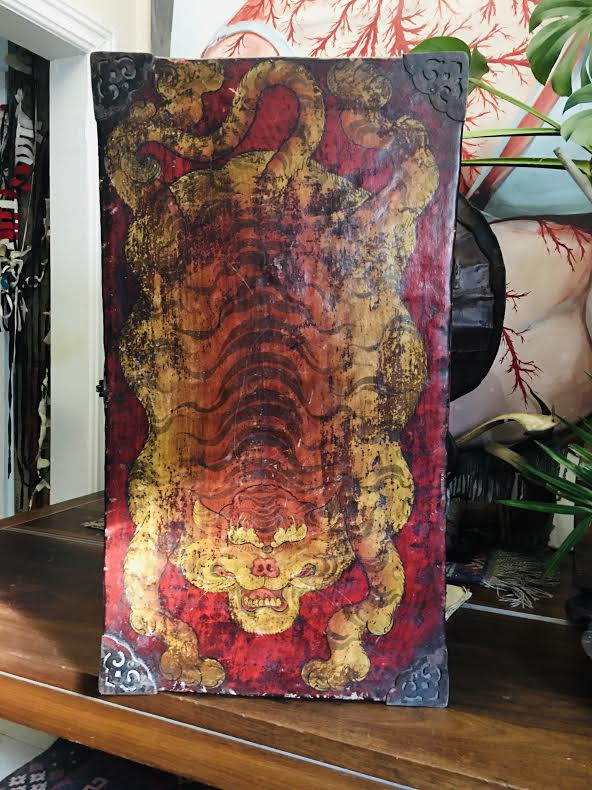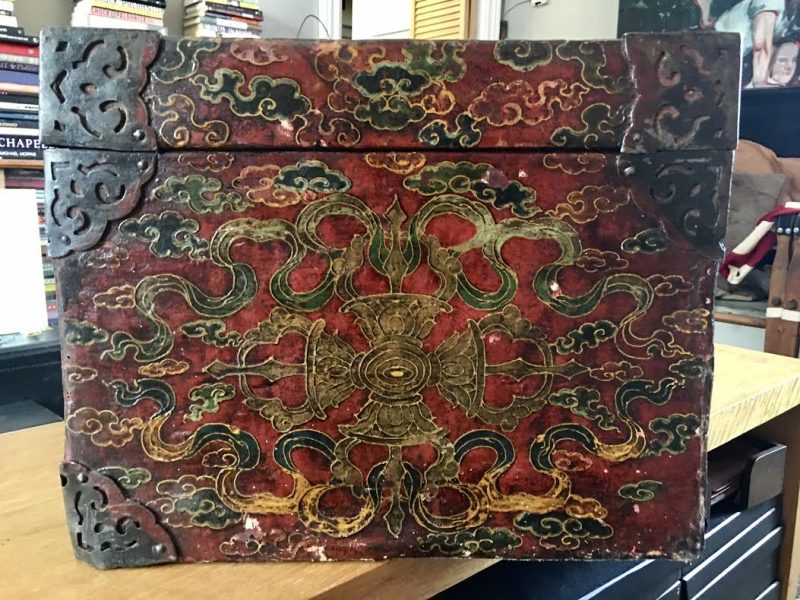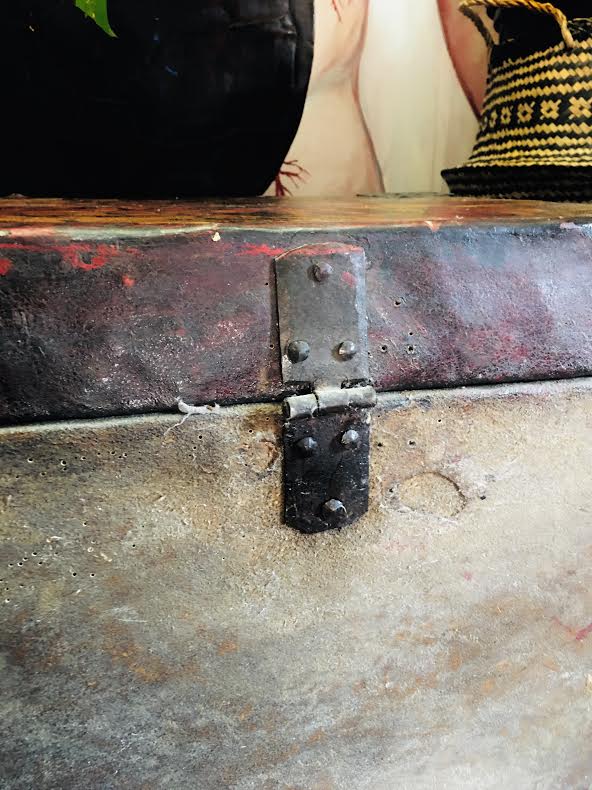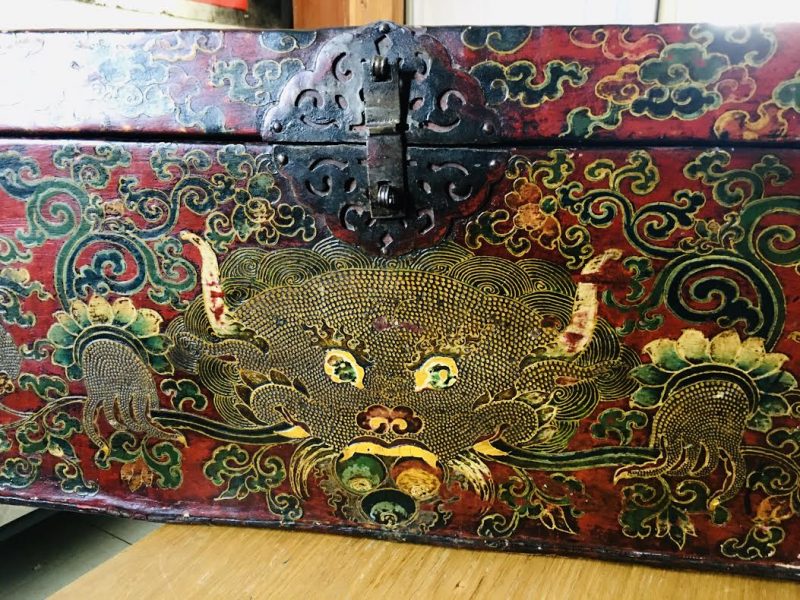SOLD. Authentic Tibetan Tiger & Dragon Symbols Wood & Leather Trunk
Late 19th or early 20th century Authentic Tibetan Buddhist Chinese Wood & Leather Monastery Storage Trunk. Box is white oak covered in leather which is hand painted with traditional Tibetan Tiger & Dragon symbols. Hand painted on top, front and sides; not the back. In Tibet, tigers symbolize unconditional confidence, disciplined awareness, kindness and modesty. The dragon is a symbol of evil, in both the chivalric and Christian traditions. In the Orient, it symbolizes supernatural power, wisdom, strength, and hidden knowledge. … Killing the dragon is the conflict between light and darkness, slaying the forces of evil.
Wrought iron fittings. Approx. 80 – 100 years old or older. Comes with letter of authentication by previous owner & dealer. Measures 29 inches width x 13 inches height x 16.25 inches depth. Excellent condition. Sold as is, as a beautiful antique & rare item. Evidence of previous insect markings.
SOLD.
Asking USD$1250.
Please research item to understand pricing. Price is fixed.
Chöyön trunks were used in monasteries and lamaseries to store valuable gifts of silk and other ritual items, and the trunks’ widths were calculated to hold unused rolls of silk. This usage began because of a special relationship, known as chöyön, that was established in 1247 between the Mongol ruler, Godan Khan, and his spiritual advisor, the Tibetan lama Sakya Pandita. This relationship was characterized by the lama’s commitment to the spiritual well-being of his patron and his subjects, and Godan Khan’s protection of the lama. Chinese silk brocades were presented as patronage gifts, which could be made into hangings, banners, drapes, borders for tangkas and mandalas, and special costumes for cham dancers. Unused rolls were stored until needed. The trunks were kept in storerooms in the monastery, at the monastic hostels (kangtsen), or at the labrang, the lamas’ households. The highly decorative, iconic designs on these trunks are unique to the Wutun Monastery. Chöyön trunks used at other monasteries were not as elaborately decorated, and some were trapezoidal in shape; however, they were decorated with Buddhist icons and Auspicious symbols. Generally speaking, such abundant use of Buddhist icons on furniture was limited to monastic/temple use and to items in the private prayer rooms of the most affluent patrons.


